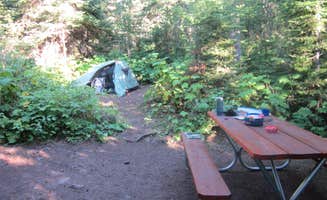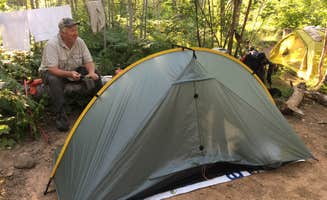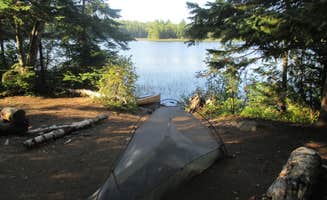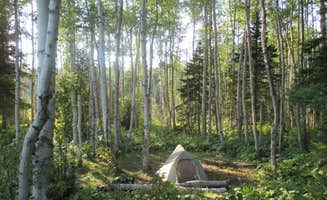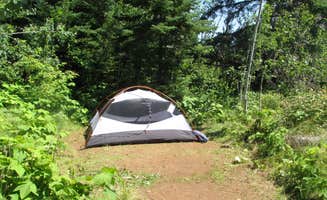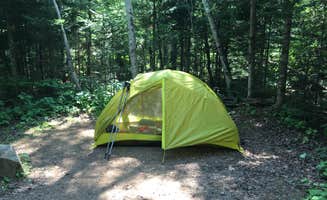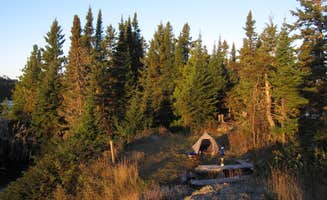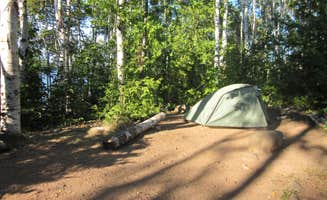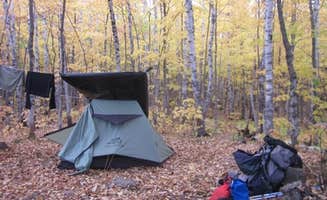Isle Royale National Park campgrounds operate within a wilderness setting where temperatures typically range from 35°F to 70°F during the visitor season. The island's topography includes dense forest, rocky shorelines, and inland lakes across 45 miles of rugged terrain. Sites throughout the national park require proper food storage in National Park Service-provided lockers to prevent wildlife encounters and contamination.
What to do
Fishing opportunities: Lake Chickenbone at West Chickenbone Campground provides excellent pike and walleye fishing. According to Jason H., "Our neighbor caught 3 pike and a walleye in about 45 minutes."
Wildlife observation: Look for moose and foxes throughout the park trails. At McCargoe Cove Campground, many visitors report fox sightings: "We had a fox come through our site right outside the door of our shelter too - way cool," notes Tee Jay M.
Hiking to waterfronts: The trails connecting campgrounds offer scenic lake views. At Lane Cove, "We arrived shortly before the golden hour and the campground was gorgeous and perfect for watching the sunset and listening to the looms sing their songs," shares Dahlia V.
What campers like
Shelters during wet conditions: The basic three-sided shelters provide protection from rain and insects. Amy G. at McCargoe Cove notes, "Each shelter is four sided with the front side 'screened in' for bugs. This is lovely in buggy weather! There are also boards all over the inside (parallel to the floor around the walls) that are great for hanging and airing out wet items."
Lake swimming access: Three Mile Campground offers excellent water access despite being close to Rock Harbor. Jason H. reports, "Swimming off the remnants of the dock and such easy access to the lake made for a wonderful experience."
Secluded lakefront sites: Several campgrounds offer waterfront privacy. At Moskey Basin Campground, Nicole L. found her shelter "secluded enough from the other campers to the point where we could walk out to the water and clean ourselves nude without having peeping toms."
Group gathering spaces: Some campgrounds feature common areas. Sarah C. mentioned that Todd Harbor has "a large group fire pit in the middle of the campground area," while McCargoe Cove offers "a shared fire (not one for each site) with picnic tables nearby and a lovely view of the water."
What you should know
Water treatment necessities: Lake water requires careful handling. Sarah C. at McCargoe Cove advises, "The Park Service recommends treating your drinking water in two ways (ie. filter AND boil, chemically treat AND filter, some combination of two)."
Wildlife precautions: Campground foxes can become problematic. Amy G. warns, "The camp fox...will steal your stuff (including shoes) so be careful, tie your drying shoes to the picnic table, and do not feed the wildlife."
Temperature variations: Inland sites experience different conditions than shoreline areas. Jason H. notes that "the interior of the island can be much warmer than the coast, not to mention the arid conditions throughout making it difficult to find water."
Algal blooms: Interior lakes sometimes develop harmful algae. Nicole L. at East Chickenbone Campground warns, "fair warning if you are thinking of camping here during bloom season (late summer)."
Tips for camping with families
Choose accessible shoreline sites: For families with younger children, select campgrounds closer to ferry landings. Alexa S. notes about Daisy Farm Campground: "The campground has a number of shelters and we had no problems finding an available one."
Bring detailed water plans: With limited potable water, families need multiple treatment methods. Tori K. explains, "When you get to the island off the boat, the ranger goes through everybody's route and itinerary with them and will let you know what water sources may be dried up and what water sources are going through an algal bloom so you can plan your water sourcing appropriately."
Pack complete toilet supplies: Toilet facilities lack standard amenities. Amy G. emphasizes that "they do not provide TP - you must take your own."
Tips from RVers
No vehicle access: Isle Royale prohibits private vehicles, making traditional RV camping impossible. According to reviewers, boat-in camping at sites like Todd Harbor Campground provides the most comfortable alternative for those accustomed to RV amenities.
Consider water-based entry: For those used to RV convenience, Matt S. notes that "fishermen" appreciate the "nice dock" at McCargoe Cove, making it "especially popular" for boat access.
Research shelter locations: Without RVs, shelter availability becomes critical in poor weather. Ethan S. advises, "Try to get a spot next to the lake, but if you don't, the shelters in the woods are also great."


